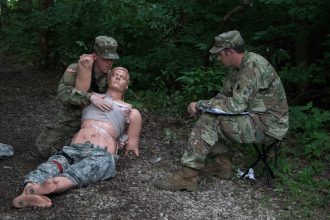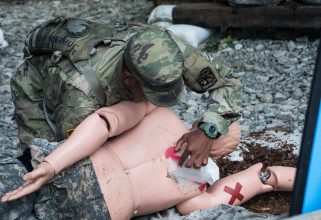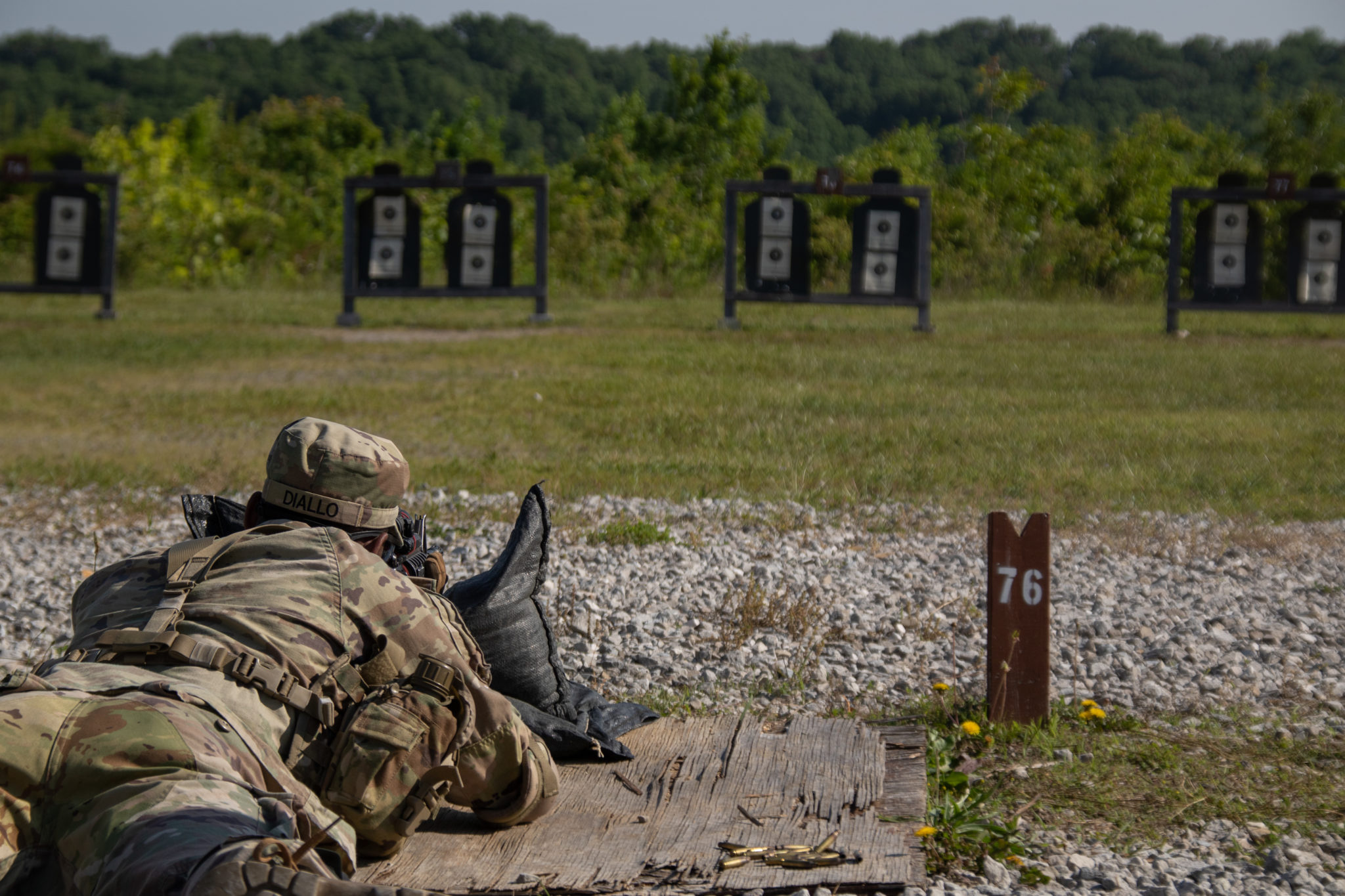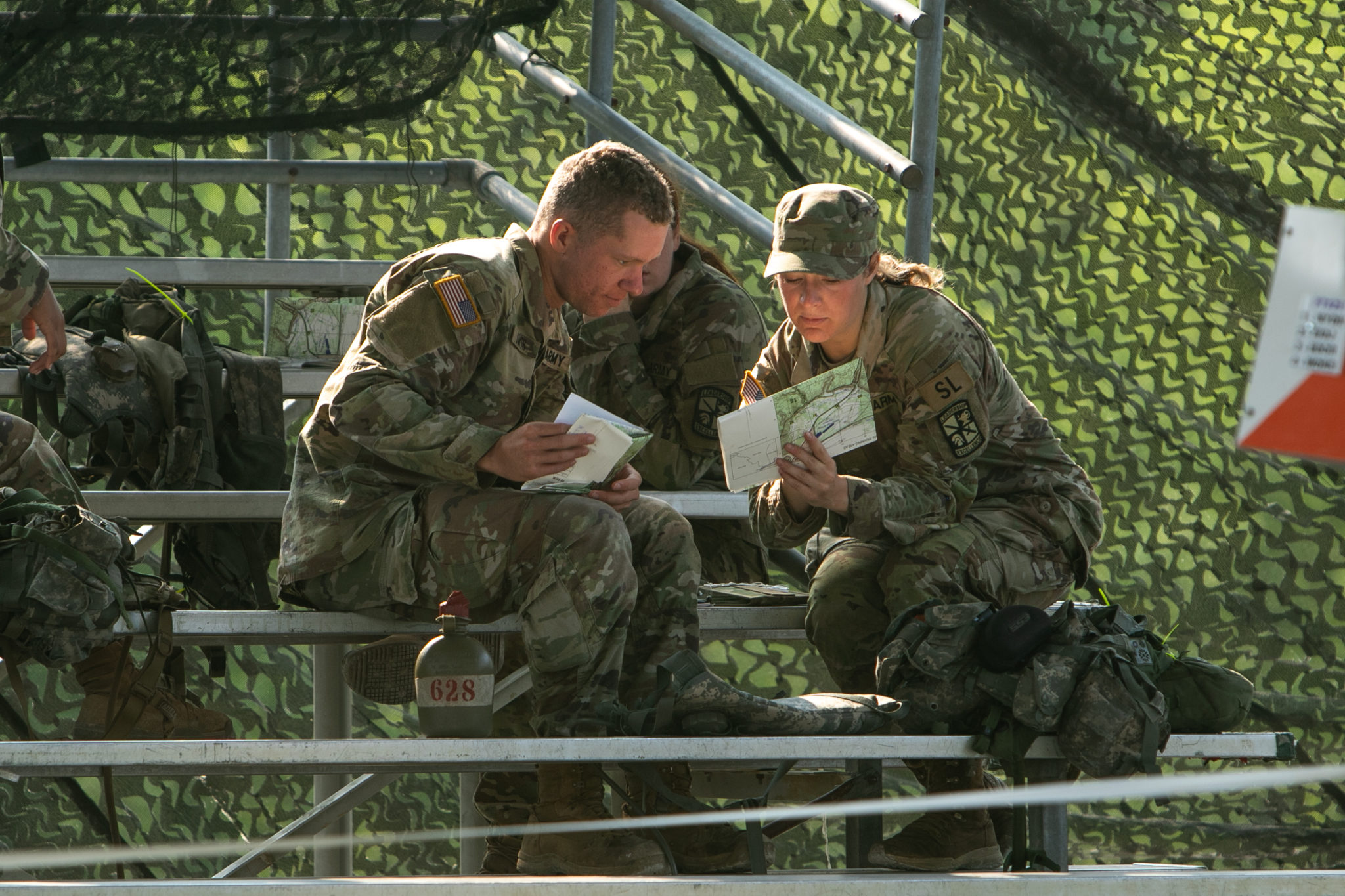
4th Regiment, Advanced Camp Cadet taking the First Aid test June 29, 2018 at Fort Knox, KY.
FORT KNOX, Ky.—Randy is having the worst day of his life. With sucking chest wounds and femoral artery hemorrhages, Randy’s skin has already gone rubbery and lost all color. Luckily for him, his battle buddies—every Cadet in 4th Regiment, Advanced Camp—dragged him to safety and treated his wounds.
Cadets simulated real, fatal trauma and learned the TC3, Tactical Combat Casualty Care, methods needed to treat them. Every “saved” Randy helps create another competent lifesaver.
On-site, approximately 28 Randy’s showcased four severe injuries. Cadre provided scenarios, and Cadets worked through treatment, announcing and explaining their decisions.
At one testing station, “we are going to be treating a massive hemorrhaging wound to the leg, so we’ll use a tourniquet for that,” Cadet Addison Pratt from Norwich University described. “We’ll treat his sucking chest wound, then a minor laceration on the arm.”

4th Regiment, Advanced Camp Cadet treats simulated wounds, June 29, 2018 at Fort Knox, KY.
Cadets ran the scenario several times. Plus, platoons performed extra hands-on training before coming to the testing field today.
“It’s basically first aid for when you get to a casualty on the field,” Cadet Matthew Montanaro from Slippery Rock University explained.
In the field, everyone must be a first responder. After this training, each of these Cadets will be able to stabilize an injured battle buddy and give them that much more of a chance to make it.
“Everyone’s a rifleman first, so, in an ideal world, a platoon leader would never have to do this,” Montanaro concluded. “But, it’s not an ideal world; everyone needs this skillset.”
Our Soldiers are asked to hold and protect each other’s lives. Today, they became better at it.

4th Regiment, Advanced Camp Cadets taking the First Aid test June 29, 2018 at Fort Knox, KY.
“When we go downrange, we only have each other,” Cadet Krysten Vasquez from Texas A&M University said. “We look to our left and right, and that’s all we have—our brothers and sisters.”




